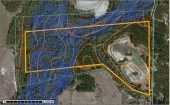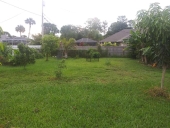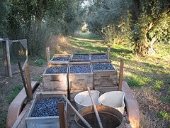




With great appreciation for this forum an and all its wonderful people, doing great things, cultivating a lifestyle more in harmony with this beautiful planet.
Thank You!
 1
1




http://www.popcliq.com (web development), GoPermaculture Food Forest http://www.permies.com/t/57687/forest-garden/Permaculture-Food-Forest-suburban-permaculture, Sea Buckthorn (Seaberry) grower (hobbiest) https://www.facebook.com/michelle.bisson.37, zone 3b/4b (borderline) Quebec Canada




With great appreciation for this forum an and all its wonderful people, doing great things, cultivating a lifestyle more in harmony with this beautiful planet.
Thank You!
 1
1




Idle dreamer




With great appreciation for this forum an and all its wonderful people, doing great things, cultivating a lifestyle more in harmony with this beautiful planet.
Thank You!
 1
1




Best luck: satisfaction
Greatest curse, greed




With great appreciation for this forum an and all its wonderful people, doing great things, cultivating a lifestyle more in harmony with this beautiful planet.
Thank You!
 1
1




Best luck: satisfaction
Greatest curse, greed
 1
1









 2
2




Hans Albert Quistorff, LMT projects on permies Hans Massage Qberry Farm magnet therapy gmail hquistorff




With great appreciation for this forum an and all its wonderful people, doing great things, cultivating a lifestyle more in harmony with this beautiful planet.
Thank You!




With great appreciation for this forum an and all its wonderful people, doing great things, cultivating a lifestyle more in harmony with this beautiful planet.
Thank You!
 1
1




With great appreciation for this forum an and all its wonderful people, doing great things, cultivating a lifestyle more in harmony with this beautiful planet.
Thank You!




With great appreciation for this forum an and all its wonderful people, doing great things, cultivating a lifestyle more in harmony with this beautiful planet.
Thank You!




With great appreciation for this forum an and all its wonderful people, doing great things, cultivating a lifestyle more in harmony with this beautiful planet.
Thank You!




With great appreciation for this forum an and all its wonderful people, doing great things, cultivating a lifestyle more in harmony with this beautiful planet.
Thank You!
 1
1











 1
1




Hans Albert Quistorff, LMT projects on permies Hans Massage Qberry Farm magnet therapy gmail hquistorff
 1
1




Best luck: satisfaction
Greatest curse, greed




 1
1




We come from the Earth, We return to the Earth, and in between we Garden...




With great appreciation for this forum an and all its wonderful people, doing great things, cultivating a lifestyle more in harmony with this beautiful planet.
Thank You!




With great appreciation for this forum an and all its wonderful people, doing great things, cultivating a lifestyle more in harmony with this beautiful planet.
Thank You!








Aaron Hartwig wrote: we wanted to build a 2 meter high stone or earthen wall on the border towards our noisy neighbours.
I found a seller for 2 year old moringa trees. The thing is, it wont freeze here but still can get quite cold in winter nights. For now I think I will give it a try.
Beside windprotection, I will have to look for very resistant food trees. A seller from a local shop just told me that apples are expensive here because they are difficult to grow due to wind.
Best luck: satisfaction
Greatest curse, greed




Best luck: satisfaction
Greatest curse, greed




Best luck: satisfaction
Greatest curse, greed




Best luck: satisfaction
Greatest curse, greed
 3
3




Moderator, Treatment Free Beekeepers group on Facebook.
https://www.facebook.com/groups/treatmentfreebeekeepers/











Best luck: satisfaction
Greatest curse, greed




With great appreciation for this forum an and all its wonderful people, doing great things, cultivating a lifestyle more in harmony with this beautiful planet.
Thank You!




With great appreciation for this forum an and all its wonderful people, doing great things, cultivating a lifestyle more in harmony with this beautiful planet.
Thank You!




With great appreciation for this forum an and all its wonderful people, doing great things, cultivating a lifestyle more in harmony with this beautiful planet.
Thank You!

| I agree. Here's the link: http://stoves2.com |






